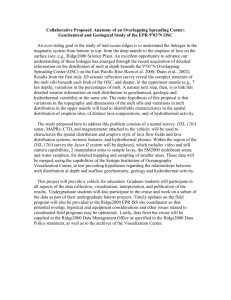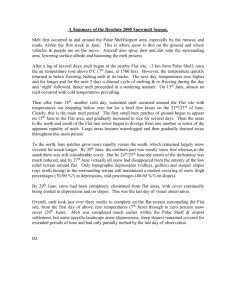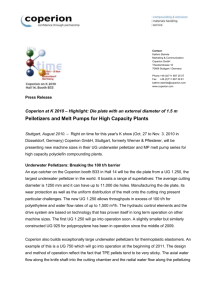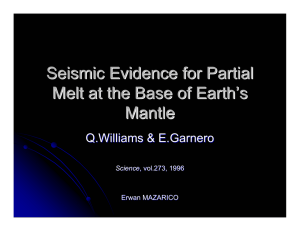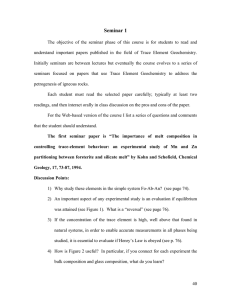Golabek_Gregor_Poster - SWISS GEOSCIENCE MEETINGs
advertisement
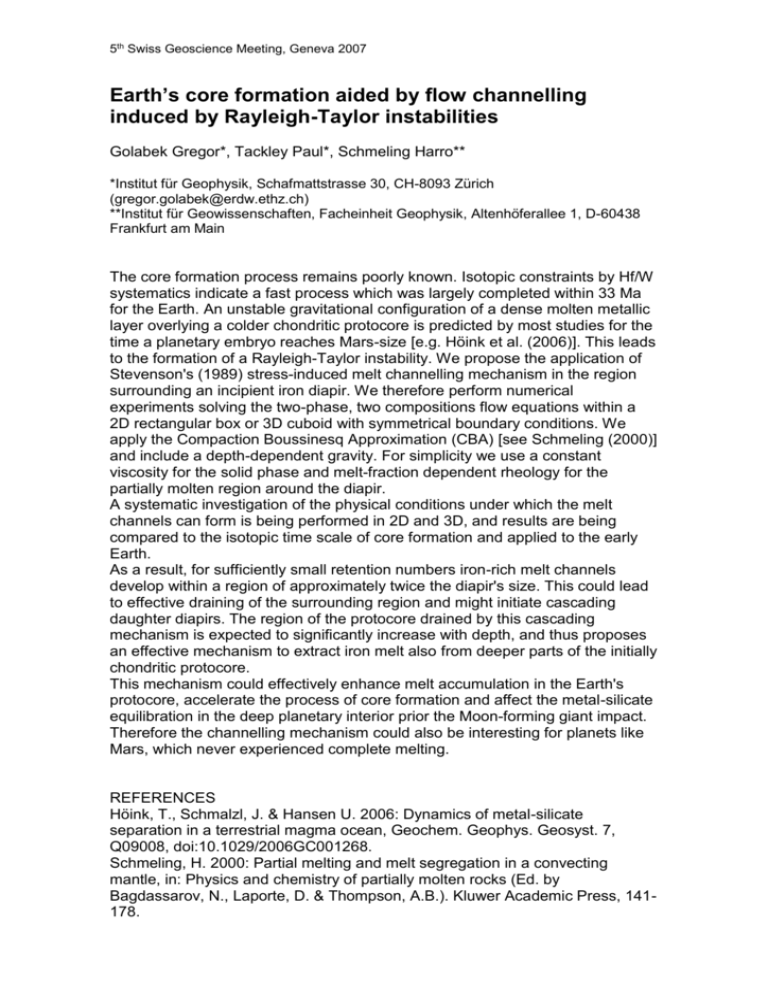
5th Swiss Geoscience Meeting, Geneva 2007 Earth’s core formation aided by flow channelling induced by Rayleigh-Taylor instabilities Golabek Gregor*, Tackley Paul*, Schmeling Harro** *Institut für Geophysik, Schafmattstrasse 30, CH-8093 Zürich (gregor.golabek@erdw.ethz.ch) **Institut für Geowissenschaften, Facheinheit Geophysik, Altenhöferallee 1, D-60438 Frankfurt am Main The core formation process remains poorly known. Isotopic constraints by Hf/W systematics indicate a fast process which was largely completed within 33 Ma for the Earth. An unstable gravitational configuration of a dense molten metallic layer overlying a colder chondritic protocore is predicted by most studies for the time a planetary embryo reaches Mars-size [e.g. Höink et al. (2006)]. This leads to the formation of a Rayleigh-Taylor instability. We propose the application of Stevenson's (1989) stress-induced melt channelling mechanism in the region surrounding an incipient iron diapir. We therefore perform numerical experiments solving the two-phase, two compositions flow equations within a 2D rectangular box or 3D cuboid with symmetrical boundary conditions. We apply the Compaction Boussinesq Approximation (CBA) [see Schmeling (2000)] and include a depth-dependent gravity. For simplicity we use a constant viscosity for the solid phase and melt-fraction dependent rheology for the partially molten region around the diapir. A systematic investigation of the physical conditions under which the melt channels can form is being performed in 2D and 3D, and results are being compared to the isotopic time scale of core formation and applied to the early Earth. As a result, for sufficiently small retention numbers iron-rich melt channels develop within a region of approximately twice the diapir's size. This could lead to effective draining of the surrounding region and might initiate cascading daughter diapirs. The region of the protocore drained by this cascading mechanism is expected to significantly increase with depth, and thus proposes an effective mechanism to extract iron melt also from deeper parts of the initially chondritic protocore. This mechanism could effectively enhance melt accumulation in the Earth's protocore, accelerate the process of core formation and affect the metal-silicate equilibration in the deep planetary interior prior the Moon-forming giant impact. Therefore the channelling mechanism could also be interesting for planets like Mars, which never experienced complete melting. REFERENCES Höink, T., Schmalzl, J. & Hansen U. 2006: Dynamics of metal-silicate separation in a terrestrial magma ocean, Geochem. Geophys. Geosyst. 7, Q09008, doi:10.1029/2006GC001268. Schmeling, H. 2000: Partial melting and melt segregation in a convecting mantle, in: Physics and chemistry of partially molten rocks (Ed. by Bagdassarov, N., Laporte, D. & Thompson, A.B.). Kluwer Academic Press, 141178. 5th Swiss Geoscience Meeting, Geneva 2007 Stevenson, D.J. 1989: Spontaneous small-scale melt segregation in partial melts undergoing deformation, Geophys. Res. Lett. 16, 1067-1070.



